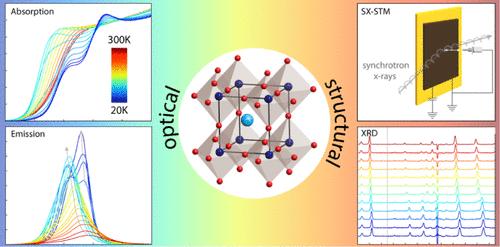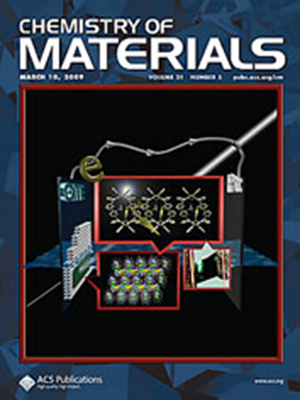冷却混合 A 盐基卤化物包光体:温度对光学和结构特性的影响
IF 7
2区 材料科学
Q2 CHEMISTRY, PHYSICAL
引用次数: 0
摘要
要广泛应用基于透辉石的光伏技术,就必须同时探测极端工作条件下的结构和光学特性,以全面了解材料在应力作用下的行为。在此,我们研究了混合 A 位阳离子三碘化铅包晶石薄膜(85% 甲基铵和 15% 甲脒)在 300 至 20 K 范围内的温度依赖行为。通过结合光学和结构技术,我们发现这种包晶石成分在 ∼110 K 时发生了四方到正方的相变,衍射图样的变化表明了这一点。随着温度的降低,量子产率增加,同时载流子寿命延长,这表明非辐射重组途径受到抑制。有趣的是,与单 A 位阳离子包晶石不同的是,当相变接近时,吸收光谱中会出现一个额外的光学转变,这也反映在发射光谱中。我们认为,光学吸收和发射的分裂是由于相变过程中混合阳离子包晶的局部偏析造成的。本文章由计算机程序翻译,如有差异,请以英文原文为准。

Cooling Mixed A-Site Halide Perovskites: Impact of Temperature on Optical and Structural Properties
The widespread utilization of perovskite-based photovoltaics requires probing both the structural and optical properties under extreme operating conditions to gain a holistic understanding of the material behavior under stressors. Here, we investigate the temperature-dependent behavior of mixed A-site cation lead triiodide perovskite thin films (85% methylammonium and 15% formamidinium) in the range from 300 to 20 K. Through a combination of optical and structural techniques, we find that the tetragonal-to-orthorhombic phase transition occurs at ∼110 K for this perovskite composition, as indicated by the change in the diffraction pattern. With decreasing temperature, the quantum yield increases with a concurrent elongation of the carrier lifetimes, indicating suppression of nonradiative recombination pathways. Interestingly, in contrast to single A-site cation perovskites, an additional optical transition appears in the absorption spectrum when the phase transition is approached, which is also reflected in the emission spectrum. We propose that the splitting of the optical absorption and emission is due to local segregation of the mixed cation perovskite during the phase transition.
求助全文
通过发布文献求助,成功后即可免费获取论文全文。
去求助
来源期刊

Chemistry of Materials
工程技术-材料科学:综合
CiteScore
14.10
自引率
5.80%
发文量
929
审稿时长
1.5 months
期刊介绍:
The journal Chemistry of Materials focuses on publishing original research at the intersection of materials science and chemistry. The studies published in the journal involve chemistry as a prominent component and explore topics such as the design, synthesis, characterization, processing, understanding, and application of functional or potentially functional materials. The journal covers various areas of interest, including inorganic and organic solid-state chemistry, nanomaterials, biomaterials, thin films and polymers, and composite/hybrid materials. The journal particularly seeks papers that highlight the creation or development of innovative materials with novel optical, electrical, magnetic, catalytic, or mechanical properties. It is essential that manuscripts on these topics have a primary focus on the chemistry of materials and represent a significant advancement compared to prior research. Before external reviews are sought, submitted manuscripts undergo a review process by a minimum of two editors to ensure their appropriateness for the journal and the presence of sufficient evidence of a significant advance that will be of broad interest to the materials chemistry community.
 求助内容:
求助内容: 应助结果提醒方式:
应助结果提醒方式:


